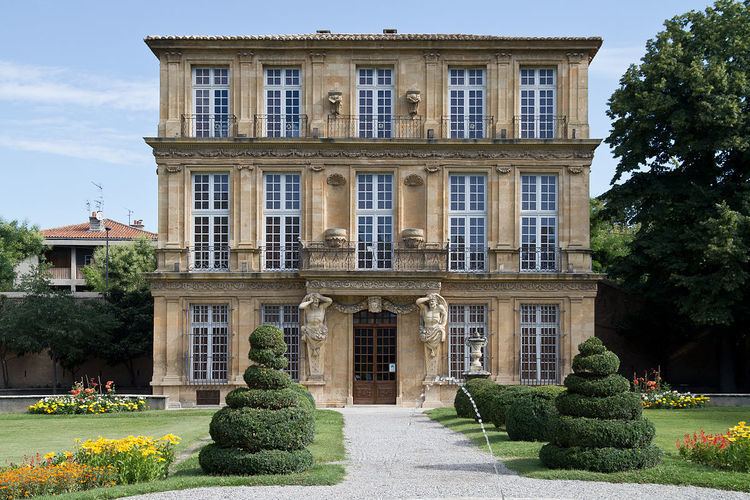Phone +33 4 42 91 88 75 | ||
 | ||
Hours Open today · 10AM–12:30PM, 1:30–6PMSaturday10AM–12:30PM, 1:30–6PMSunday10AM–12:30PM, 1:30–6PMMonday10AM–12:30PM, 1:30–6PMTuesdayClosedWednesday10AM–12:30PM, 1:30–6PMThursday10AM–12:30PM, 1:30–6PMFriday10AM–12:30PM, 1:30–6PMSuggest an edit Similar Cezanne's studio, Musée des Tapisseries, Aix Cathedral, Musée Granet, Cours Mirabeau | ||
The Pavillon Vendôme is a historic pavilion surrounded by a French formal garden located 32 rue Celony in Aix-en-Provence, France.
Contents
History
It was built by architect Pierre Pavillon (1612-1670) between 1665 and 1667.
It was commissioned by for Louis, Duke of Vendôme (1612-1669) as a place where he could take his lover, Lucrèce de Forbin Solliès, also known as "la Belle du Canet". He died in the house on August 6, 1669.
Later, it was owned by the painter Jean-Baptiste van Loo (1684-1745), who had a studio there. It was subsequently purchased by Barthélemy-Louis Reboul, Secretary of the Académie des Sciences, Agriculture, Arts et Belles Lettres d'Aix.
After the French Revolution of 1789, it was purchased by Jean-Joseph-Pierre Guigou, who was Bishop of Angoulême, who turned it into a Catholic boarding school for girls.
In 1906, it was purchased by Henri Dobler (1863-1941), a Swiss art collector, painter and poet. He donated it to the city of Aix-en-Provence after his death. It has served as a museum since then. It is home to temporary art exhibitions.
Heritage significance
The house has been listed as a Monument historique since March 27, 1914, and the garden since October 15, 1953.
